Everything you should know about ranking in Position Zero.

Ever Googled a question and spotted a neat little answer box sitting right at the top—above all the usual search results? That’s called a featured snippet, often referred to as position zero. And yes, it’s every bit as powerful as it sounds.
Why? Because it grabs the spotlight before any other link, giving your content premium real estate on the SERP (Search Engine Results Page). Whether it's a step-by-step list, a concise definition, or a quick how-to, featured snippets are Google’s way of saying, "Hey, this page has the best answer!"
Getting your content into that box means more visibility, more authority, and a higher chance of winning clicks—without paying a cent in ads. In this guide, we’ll break down exactly what featured snippets are, why they’re SEO gold, and how you can optimise your content to nab that top spot.
A featured snippet is a concise summary of an answer to a user’s query, pulled directly from a webpage and displayed at the top of Google’s search results. It’s Google’s way of saying, “This content gets straight to the point.”
Featured snippets can take several forms:
These are designed to help searchers get quick answers, without the need to click through to a specific website. By presenting a concise and direct answer, Google aims to enhance the overall user experience and provide valuable information quickly. But don’t worry—users still click through in droves.
For businesses and websites, being featured in a Google snippet can have numerous benefits. Firstly, it increases brand exposure by placing the website's content at the top of the search results, making it more visible to users. This enhanced visibility can lead to increased traffic and potential conversions.
Moreover, being featured in a snippet can also establish the website as an authoritative source in the respective field. When Google selects a website's content for a featured snippet, it indicates that the website's information is trustworthy and reliable. This can greatly enhance the website's reputation and credibility, attracting more users and potential customers.
Another advantage of being featured in a snippet is the potential for a higher click-through rate (CTR). Users are more likely to click on a snippet that provides a direct answer to their query, as it saves them time and effort. This increased CTR can lead to higher website traffic and improved engagement metrics.
To increase the chances of how to appear in Google's featured snippets, websites should focus on creating high-quality and informative content that directly addresses frequently asked questions and common user queries. By structuring content in a concise and easily scannable format, websites can optimise their chances of being selected for a featured snippet.
There’s no “one-size-fits-all” when it comes to featured snippets. The type of snippet that appears depends entirely on what the user is searching for. Search engines like Google tailor the snippet format—whether it’s a paragraph, list, table, or video—based on the kind of answer the query demands.
If you want your content to land in that prime spot, it starts with understanding which snippet type aligns best with your topic—and formatting your content accordingly.
Here are the most common types of featured snippets in SEO you’ll come across:
These snippets are the most common type of featured snippet and provide a brief, direct answer to a user's query. They usually consist of a few sentences or a short paragraph that addresses the specific search intent. Paragraph snippets are commonly used for general knowledge questions or inquiries that require a straightforward answer. How to…, why…, who…, where…, are the types of questions that usually will result in a paragraph snippet.
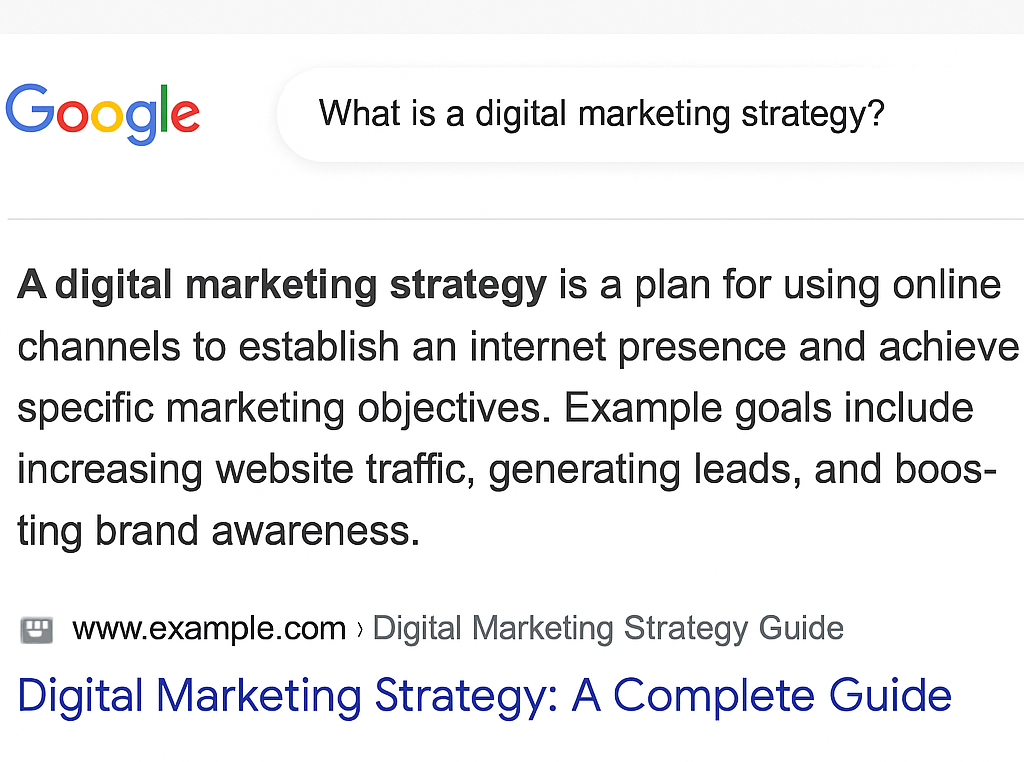
List snippets are the second most common form of snippet and present information in a list format, making it easier for users to digest and understand. They often appear for queries that require a step-by-step process, such as "how to" guides or recipes. The list format allows users to skim through the information quickly, providing them with a clear and concise overview.
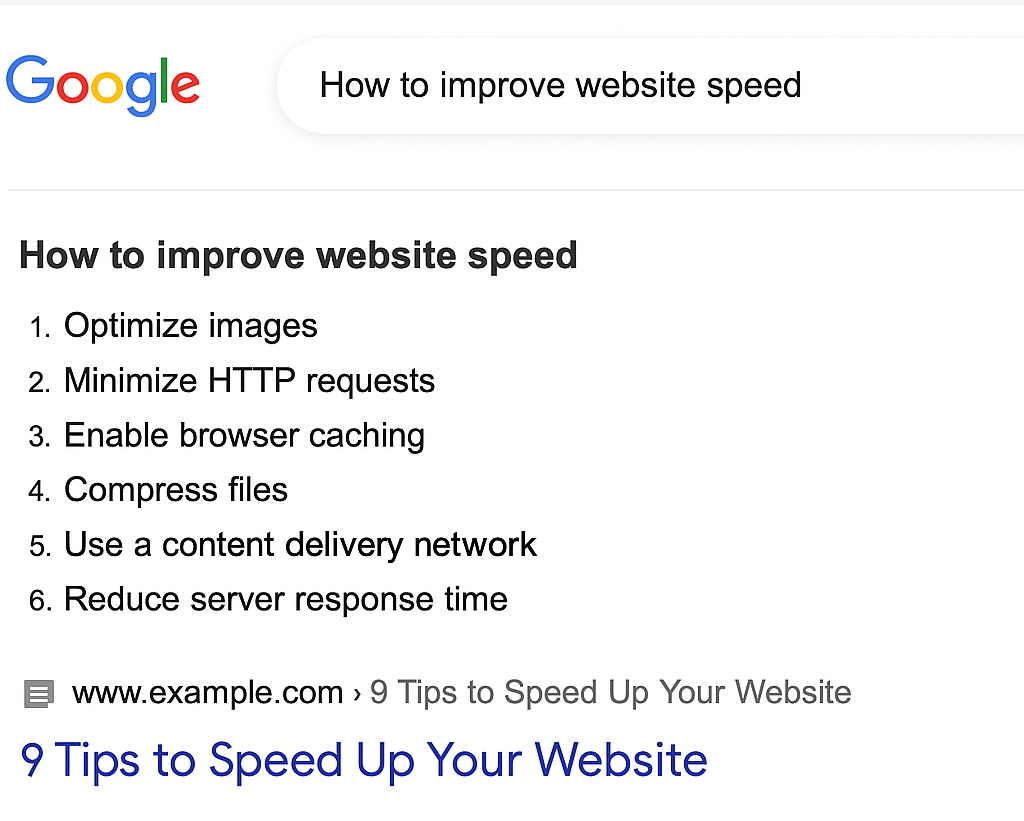
Table snippets display information in a tabular format, making it easier for users to compare and contrast different data points. They are commonly used for queries that involve numerical or statistical information, such as product comparisons, sports scores, or financial data. Table snippets organise the information in a structured manner, enhancing readability and comprehension.
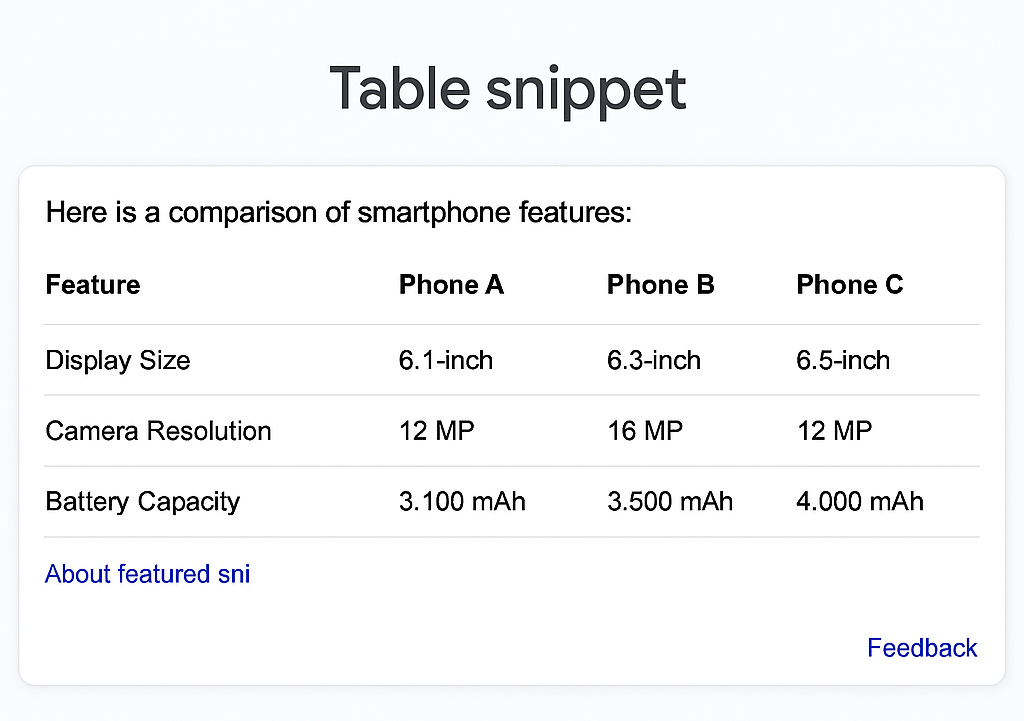
In some cases, Google may include video snippets in the search results. These snippets are often used for queries that require visual demonstrations or explanations. Video snippets allow users to watch a short clip or excerpt without having to visit a separate website or video platform.
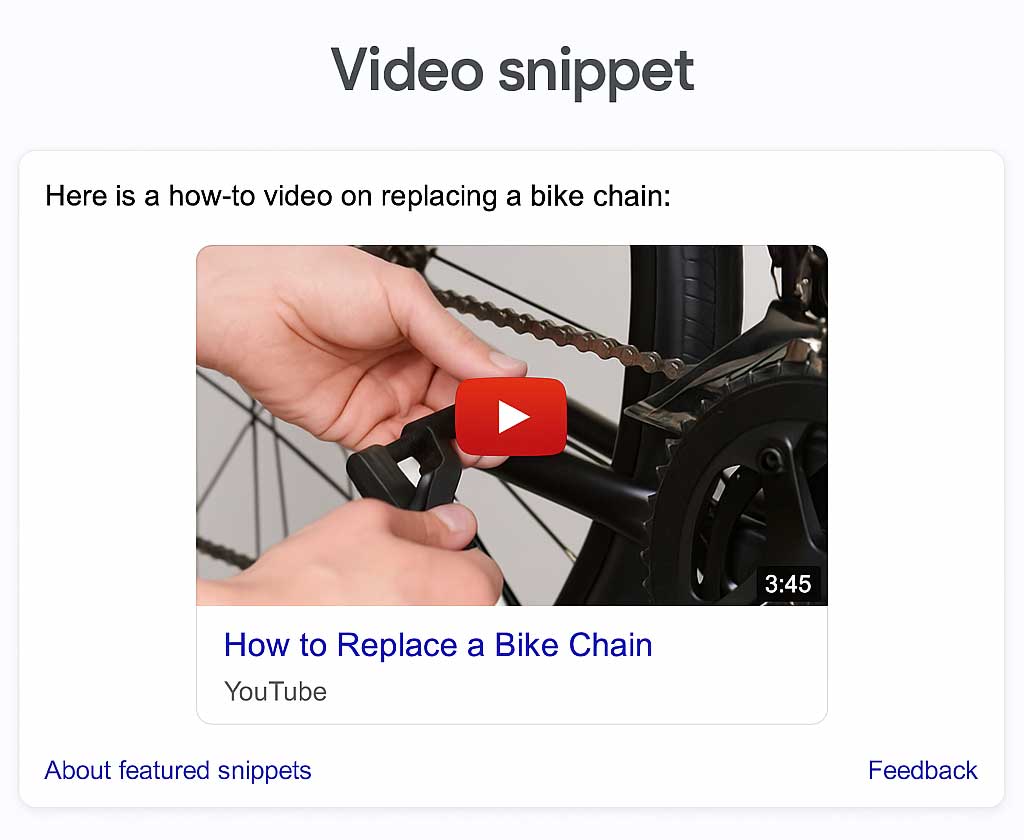
Image snippets display relevant images directly in the search results. They are commonly used for queries that involve visual information, such as identifying objects, places, or people. Image snippets provide users with a visual representation of the search query, enhancing the overall search experience.
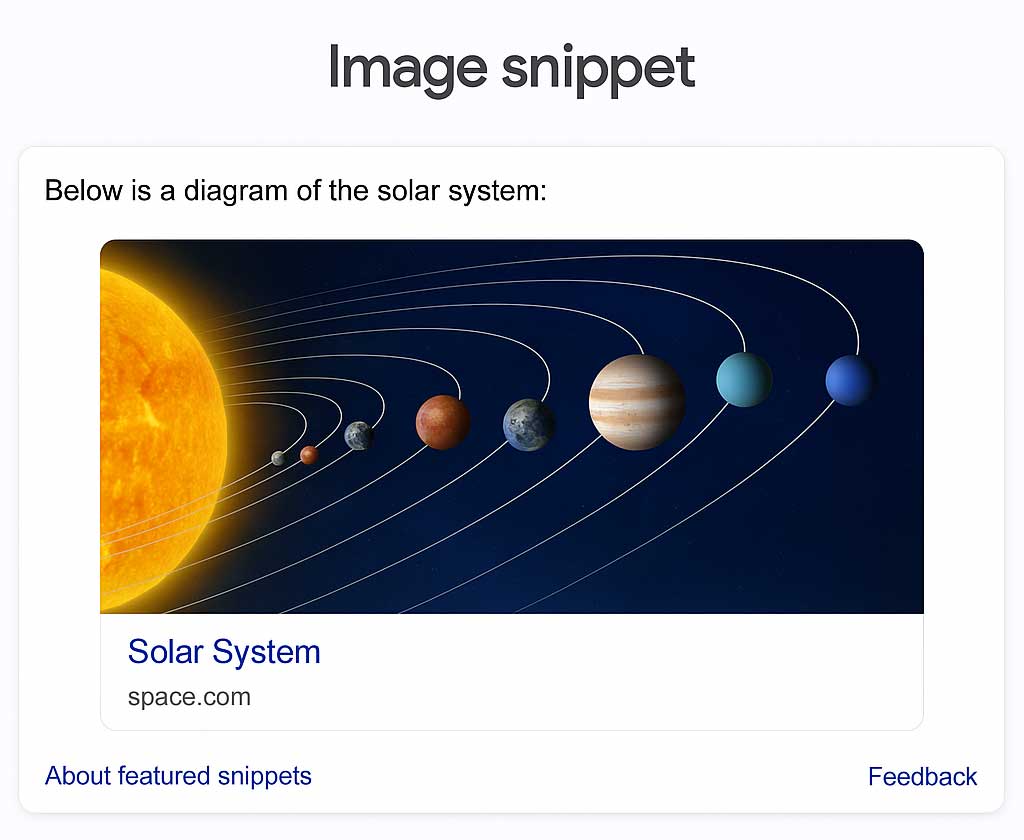
Carousel snippets showcase a series of related results in a carousel format, allowing users to scroll through different options. They are commonly used for queries that involve product listings, reviews, or recommendations. Carousel snippets provide users with multiple choices, making it easier for them to find the information they are looking for.
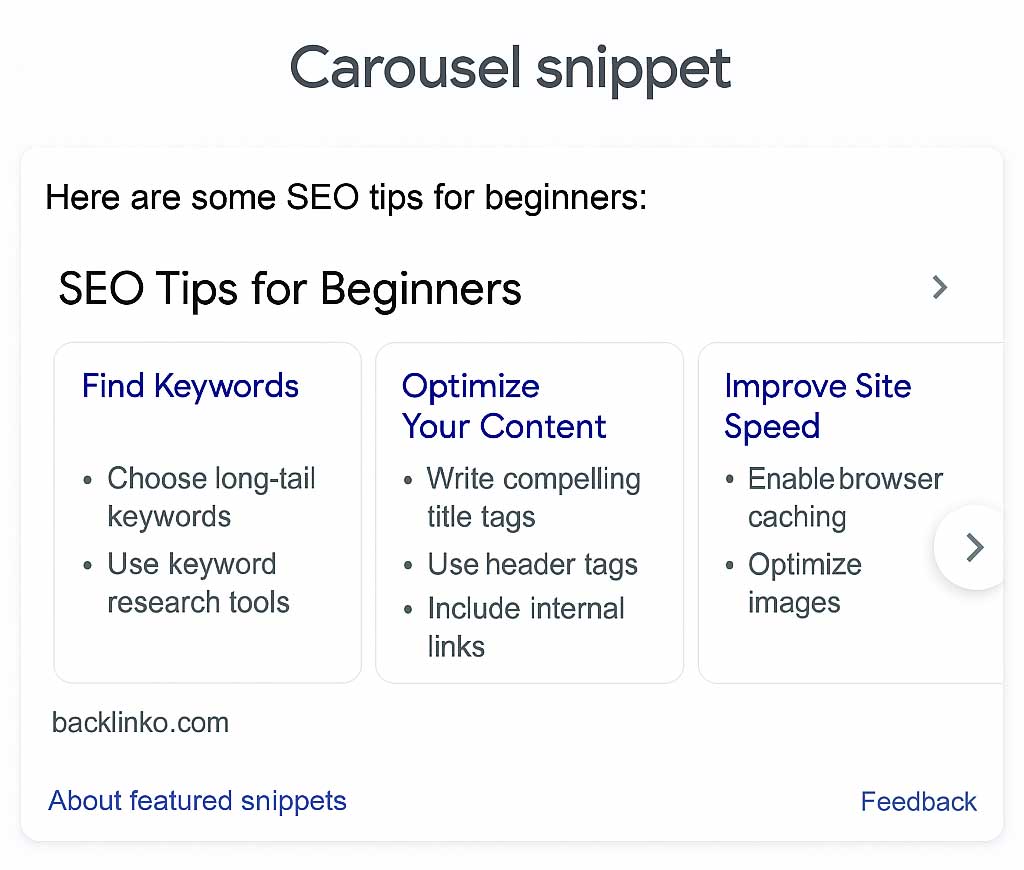
Knowledge panel snippets provide a summary of key information about a person, place, or thing. They often appear as a box on the right side of the search results, offering a quick overview.
Getting your content into a Google Knowledge Panel isn’t quite the same as landing a featured snippet. While featured snippets pull neat, structured answers directly from web pages, Knowledge Panels are a bit more sophisticated—they’re powered by Google’s Knowledge Graph, which draws data from reputable sources such as Wikipedia, Wikidata, government databases, and other trusted parts of the internet.
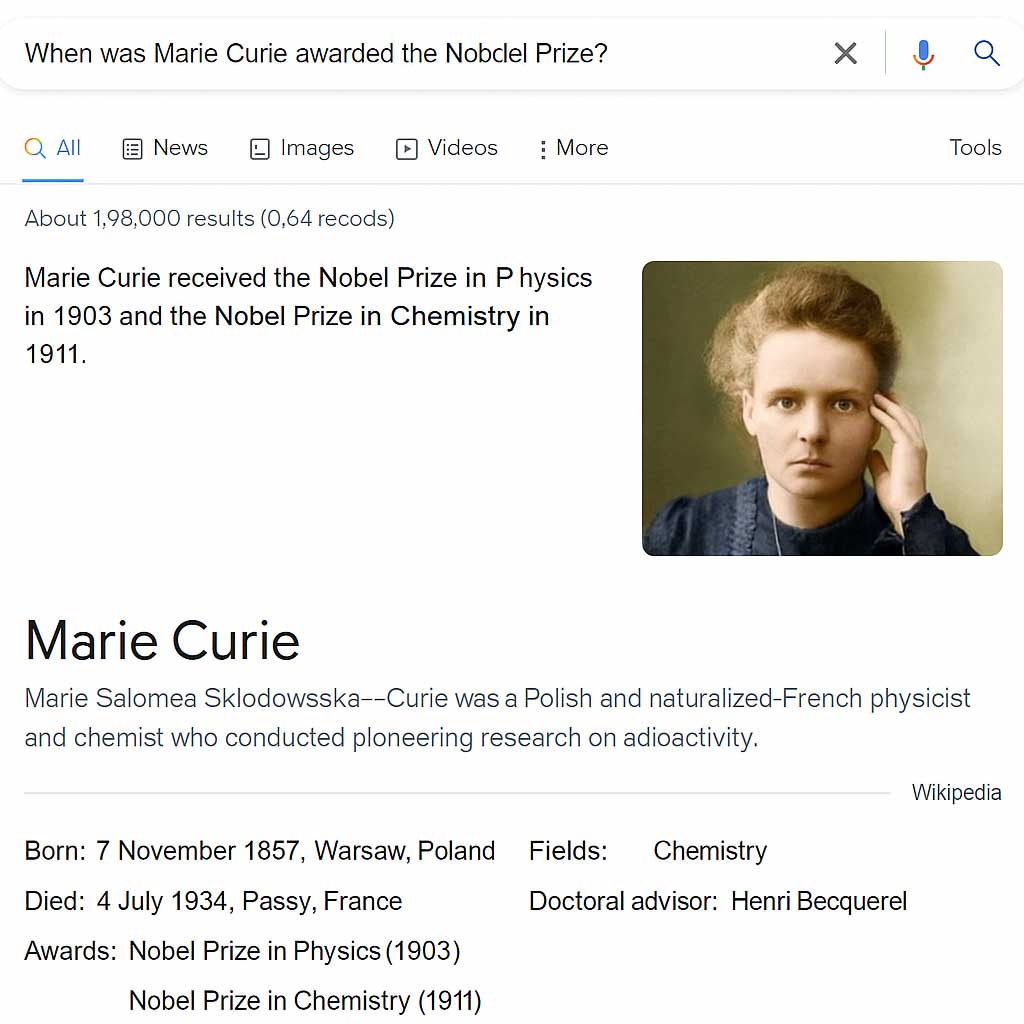
It is important to note that not all search queries will trigger a featured snippet, and the type of snippet displayed may vary depending on the search query and the search engine used. However, understanding the different types of featured snippets can help optimise content to increase the chances of appearing in these valuable search results. Google is continually refining its algorithms and search results page layout, so the specifics of featured snippets may change over time.
Because they’re literally at the top. Even above the first organic result.
Landing a featured snippet can:
So yes, that little box can pack a mighty SEO punch.
Here’s how to turn your content into snippet-worthy gold:
Think about what your audience is asking. Then answer it—clearly, directly, and within the first 100 words of your content. Google loves fast answers.
Use long-tail keywords that match user queries like:
These make it easier for Google to match your content to searcher intent.
Google wants the best answer, not just any answer. Ensure your info is up-to-date, trustworthy, and easy to read.
Search Query: "How to write a blog post"
If your blog covers this with structured formatting, you’re in the running for that top box.
Want your site featured in that coveted Google spotlight? At SEO Plans, we specialise in helping businesses climb the rankings—and claim their spot in position zero. Let’s make your content snippet-worthy. Get in touch with us today.
Google's automated systems determine that a page would be a good featured snippet for a user's search request if it provides a concise, direct answer. When Google recognises that a query asks a question, its systems detect pages that answer the user's question and evaluate these pages to identify the best, most relevant snippet.
Google introduced featured snippets to provide users with quick, direct answers to their queries, eliminating the need to click through to a webpage. This aims to improve the user experience by delivering information more efficiently.
"Position Zero" refers to the placement of a featured snippet at the very top of the SERP, above the traditional organic search results (which start at position one).
The impact can vary. Sometimes, if the snippet fully answers the user's question, it can lead to a "no-click search." However, for more complex queries or when users want more detail, featured snippets can significantly increase CTR to the source page compared to a standard organic listing.
A featured snippet is triggered when Google detects that a search query is looking for a quick, direct answer—typically in the form of a definition, list, how-to, or comparison.
Here’s what usually sets it off:
There's no guaranteed way, but you can significantly increase your chances by:
Generally, yes. Most featured snippets are pulled from pages ranking within the top 10 organic search results. You don't necessarily need to be in the #1 organic spot, but a first-page ranking is typically a prerequisite for success.
Use SEO tools (like Ahrefs, SEMrush, Moz) to identify keywords where your competitors own snippets, or keywords that already trigger snippets where you could provide a better answer. Also, analyse "People Also Ask" boxes on Google for related questions.
Yes, in many cases. By increasing visibility and often CTR, they can drive more qualified traffic to your website.
They push traditional organic listings further down the page, making the competition for visibility even fiercer. If you own the featured snippet, you effectively get two prominent chances for a click (the snippet and your organic listing if it's also on page one).
To optimise content for featured snippets, structure your content to answer specific questions, use headings and bullet points, and provide concise information.
Featured snippets put your content at the very top of Google—above all other results. They boost visibility, increase click-through rates, build trust, and help you stand out on mobile and voice search. It’s like ranking #1... only better.